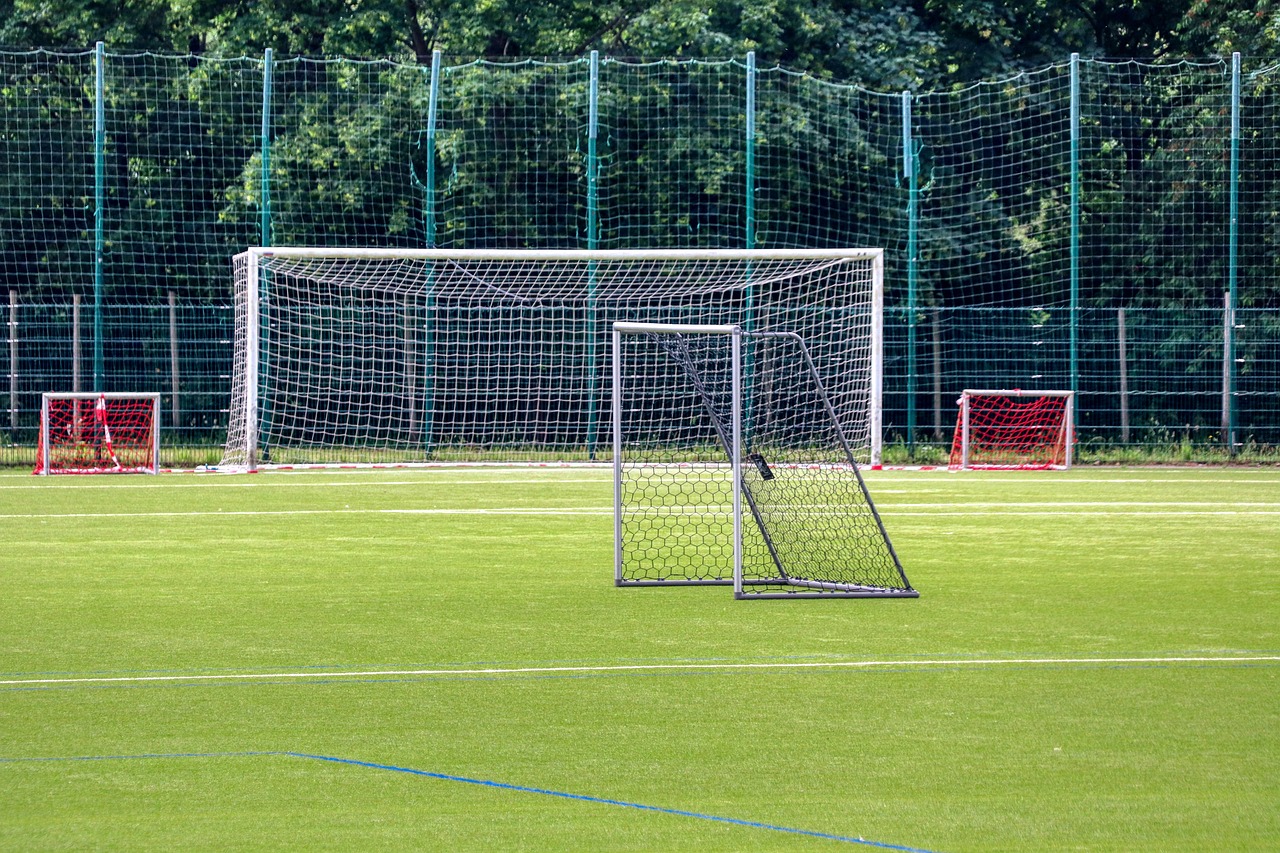How VR Improves Training for Psychological Resilience
In today's fast-paced world, the ability to bounce back from adversity is more crucial than ever. Virtual Reality (VR) has emerged as a groundbreaking tool that not only enhances training but also fundamentally transforms how we approach psychological resilience. Picture this: instead of simply reading about stress management techniques or watching videos, individuals can step into immersive environments that simulate real-life challenges. This hands-on experience allows them to practice coping strategies in a safe space, making the learning process both engaging and effective.
Imagine being able to face your fears or stressful situations without any real-world consequences. That’s the magic of VR! It creates a controlled environment where trainees can encounter various stressors—like public speaking, high-pressure work scenarios, or even personal challenges—while receiving immediate feedback on their responses. This not only boosts their confidence but also equips them with practical skills they can apply when faced with real-life adversities.
Furthermore, VR training is not just about putting on a headset and diving into a digital world. It’s about emotional engagement and realistic practice. The immersive nature of VR can evoke genuine emotional responses, which are critical for learning resilience. When individuals feel the weight of a situation—whether it's the pressure of a looming deadline or the anxiety of a difficult conversation—they are more likely to remember and apply the strategies they practiced. This emotional connection makes the training experience more memorable and impactful.
Moreover, one of the standout features of VR training is its ability to provide a safe space for experimentation. In traditional training methods, the fear of failure can hinder individuals from fully engaging or trying new strategies. However, in a virtual environment, they can explore different approaches, make mistakes, and learn from them without any real-world repercussions. This freedom encourages growth and fosters a deeper understanding of resilience-building techniques.
As we look towards the future, the potential applications of VR in resilience training are vast and varied. Different sectors, including healthcare, military, and corporate training, are beginning to recognize the benefits of this technology. By tailoring VR programs to meet specific challenges, organizations can effectively cultivate resilience among their personnel, preparing them for the unique pressures they face in their respective fields.
In conclusion, VR is revolutionizing psychological resilience training by providing immersive, engaging, and safe learning environments. As we continue to explore its capabilities, the question remains: how far can we push the boundaries of this technology to enhance our ability to cope with life's challenges? The journey is just beginning, and the possibilities are truly exciting!

The Science Behind VR and Resilience
Understanding the intricate relationship between virtual reality (VR) and psychological resilience is essential for grasping how this innovative technology can transform training methodologies. At its core, VR immerses users in a simulated environment that mimics real-life challenges, allowing them to experience and navigate stressors in a controlled setting. This immersive experience taps into the psychological principles of exposure therapy, where individuals confront their fears and anxieties in a safe space, gradually building their tolerance and resilience over time.
Research indicates that when individuals engage with VR environments, their brains respond similarly to real-life situations, activating emotional and cognitive processes that enhance learning and retention. This phenomenon can be attributed to the embodied cognition theory, which posits that our understanding and learning are deeply intertwined with our physical experiences. In simpler terms, the more we engage our senses and emotions, the more effectively we learn. VR takes advantage of this by creating scenarios that feel real, prompting users to develop coping strategies that they can later apply in actual stressful situations.
Moreover, VR's ability to evoke genuine emotional responses is a game-changer in resilience training. Unlike traditional methods that may rely on theoretical knowledge or passive observation, VR immerses users in dynamic, interactive scenarios. For instance, a healthcare professional might practice delivering bad news to a virtual patient, experiencing the emotional weight of the situation while simultaneously learning effective communication strategies. This hands-on approach not only enhances emotional engagement but also solidifies the learning experience, making it more likely that the individual will recall and apply these strategies when faced with similar real-world challenges.
Another critical aspect of the science behind VR and resilience is the concept of neuroplasticity. This refers to the brain's remarkable ability to reorganize itself by forming new neural connections throughout life. Engaging in VR training can stimulate neuroplastic changes, enabling individuals to develop new coping mechanisms and emotional responses. As individuals repeatedly practice resilience-building strategies in VR, they effectively train their brains to respond differently to stressors, fostering a robust psychological toolkit for future challenges.
To summarize, the scientific underpinnings of VR and resilience training are rooted in a combination of psychological theories and neurological processes. By offering immersive, emotionally engaging experiences, VR not only enhances learning retention but also equips individuals with the tools they need to thrive in high-pressure situations. As we continue to explore and refine these technologies, the potential for VR to revolutionize resilience training becomes increasingly evident.

Benefits of VR in Resilience Training
When it comes to enhancing psychological resilience, Virtual Reality (VR) is not just a trend; it’s a game-changer! Imagine being able to step into a world where you can experience stressors in a safe environment, practice your responses, and emerge stronger. That’s the magic of VR in resilience training! This technology offers a plethora of benefits that traditional training methods simply can’t match.
One of the standout advantages of VR is its ability to create immersive learning environments. In these digital realms, trainees can face realistic scenarios that mimic real-life challenges. For instance, a healthcare professional might simulate a high-pressure emergency room situation, allowing them to practice their coping strategies without the real-world stakes. This hands-on experience not only prepares them for actual stressors but also enhances their confidence in handling similar situations when they arise.
Moreover, VR fosters enhanced emotional engagement. Unlike conventional training methods that often rely on lectures or videos, VR immerses users in a 360-degree experience where they can feel the weight of the situation. This emotional involvement leads to deeper learning and stronger retention of resilience strategies. When individuals experience a situation firsthand, they are more likely to remember the lessons learned and apply them in real life. It’s like learning to ride a bike; you never forget the feeling of balancing on two wheels!
Another significant benefit of VR is that it provides a safe space for experimentation. In VR, individuals can explore various coping mechanisms and responses to stress without the fear of real-world consequences. This freedom encourages experimentation and growth. For example, a corporate employee might practice handling a difficult client in VR, allowing them to try different approaches and learn from their mistakes without any repercussions. This risk-free environment can lead to greater self-awareness and adaptability, essential traits for building resilience.
To sum it up, the benefits of VR in resilience training are profound and multifaceted. It transforms the way individuals learn to cope with stress by providing immersive experiences that enhance retention, emotional engagement, and safe experimentation. With VR, the journey to resilience is not just a possibility; it’s an exciting reality!

Immersive Learning Environments
Imagine stepping into a world where your fears and challenges become tangible, where you can confront them head-on without any real-world consequences. This is the essence of immersive learning environments created through virtual reality (VR). By simulating real-life scenarios, VR provides a platform where individuals can practice their responses to stressors in a safe and controlled setting. This not only prepares them for the unpredictable nature of life but also allows them to develop crucial coping strategies that can be applied outside of the virtual realm.
One of the most fascinating aspects of VR is how it can replicate various stressful situations that people might face. For instance, a healthcare professional can experience a high-pressure emergency room scenario, while a corporate employee might navigate a challenging negotiation with a difficult client. In both cases, the immersive nature of VR allows trainees to engage their senses fully, making the experience feel remarkably real. This level of engagement is crucial because it helps to forge neural pathways associated with emotional responses, thereby enhancing learning retention.
Furthermore, immersive learning environments can be tailored to fit the specific needs of different individuals or groups. By customizing scenarios, trainers can target particular stressors that their trainees are likely to encounter. For example, military personnel can undergo simulations of combat situations, while educators can create scenarios that mimic classroom management challenges. This customization ensures that the training is relevant and impactful, providing a more effective learning experience.
In addition to enhancing preparedness, these environments also foster a sense of community among participants. When individuals engage in VR training together, they can share experiences and learn from each other, creating a supportive network that strengthens their resilience. This collaborative aspect can be particularly beneficial in workplaces or teams where collective resilience is crucial for success.
To sum it up, immersive learning environments in VR are not just about experiencing stress; they are about mastering it. By providing a realistic and engaging platform for practice, VR empowers individuals to confront their fears, learn from their mistakes, and ultimately emerge more resilient. As we continue to explore the potential of this technology, the possibilities for personal and professional growth are virtually limitless.
- What is virtual reality (VR)? VR is a simulated experience that can be similar to or completely different from the real world, often involving interactive elements.
- How does VR help in resilience training? VR creates immersive scenarios that allow individuals to practice coping strategies and responses to stress in a safe environment.
- Are there any risks associated with VR training? Yes, potential risks include over-reliance on technology and accessibility issues, which can limit the effectiveness of VR training.
- What fields can benefit from VR resilience training? Fields such as healthcare, military, corporate training, and education can all leverage VR to improve resilience among their personnel.

Enhanced Emotional Engagement
One of the most remarkable aspects of virtual reality (VR) is its ability to create an immersive experience that can evoke genuine emotional responses. Unlike traditional training methods, which often rely on static images or videos, VR places individuals in a dynamic and interactive environment. Imagine stepping into a scenario where you are confronted with a stressful situation—be it a public speaking engagement or a high-stakes military operation. In that moment, you don’t just observe; you feel the weight of the situation, the tension in the air, and the urgency of the task at hand.
This emotional engagement is not just a byproduct of the technology; it is a central component of why VR is so effective in resilience training. When learners are emotionally invested in a scenario, they are more likely to retain the lessons learned and apply them in real life. Studies have shown that experiences that trigger emotional responses can enhance memory retention significantly. This is akin to how we often remember the details of a poignant movie scene long after we've watched it—our emotions anchor those memories. In VR, trainees can face their fears and challenges in a controlled setting, allowing them to process their emotions in real time.
Furthermore, VR allows for a degree of personalization that traditional training methods simply cannot match. Trainees can tailor their experiences to reflect their unique challenges and stressors. For instance, a healthcare worker might practice handling a difficult patient interaction, while a corporate employee might navigate a high-pressure presentation. This customization ensures that the emotional engagement is not just superficial; it resonates on a personal level, making the training more impactful.
Additionally, the feedback mechanisms built into VR systems can further enhance emotional engagement. As trainees navigate their scenarios, they receive real-time feedback on their performance, which can be both motivating and instructive. This immediate response creates a sense of accountability and encourages individuals to push their boundaries, fostering growth in resilience. Imagine a soldier in VR who faces a simulated combat scenario; the ability to receive instant feedback on their decisions can significantly influence their emotional state and preparedness for real-life situations.
In summary, the enhanced emotional engagement provided by VR is a game-changer in resilience training. By immersing individuals in realistic scenarios and allowing for personalized experiences, VR not only helps in skill acquisition but also in emotional processing. This dual focus on cognitive and emotional learning makes VR an invaluable tool for anyone looking to build resilience and cope with the stresses of modern life.
- What is VR resilience training?
VR resilience training uses virtual reality technology to simulate real-life stressors, helping individuals develop coping strategies and emotional strength.
- How does VR enhance emotional engagement?
VR creates immersive experiences that evoke genuine emotional responses, leading to deeper learning and better retention of resilience strategies.
- Are there any risks associated with VR training?
Yes, potential risks include over-reliance on technology and accessibility challenges, which organizations must address for effective implementation.
- What fields benefit from VR resilience training?
VR is used in various sectors, including healthcare, military, and corporate training, to help personnel build resilience tailored to their specific challenges.

Safe Space for Experimentation
One of the most remarkable features of virtual reality (VR) is its ability to create a . Imagine stepping into a world where you can confront your fears, tackle stressful situations, or practice new skills without the fear of real-world consequences. This is precisely what VR offers: a controlled environment where individuals can explore their emotional responses and develop resilience in a way that traditional training methods simply cannot match.
In VR, users can encounter various stressors and challenges tailored to their specific needs. For instance, a healthcare professional might simulate a high-pressure scenario involving a critical patient, while a corporate employee could practice handling difficult conversations with colleagues or clients. This kind of immersive practice allows individuals to experiment with different coping strategies, learning what works best for them without the risk of making mistakes in real life.
Furthermore, the freedom to fail in a virtual setting encourages participants to take risks they might shy away from in the real world. In this way, VR acts as a kind of sandbox, allowing users to push their boundaries and discover their strengths. The chance to try out new responses, fail, and then try again fosters a growth mindset, which is essential for building psychological resilience.
The effectiveness of this approach can be illustrated through a simple analogy: consider a child learning to ride a bike. Initially, they may fall a few times, but each fall is a learning opportunity. In the same vein, VR provides a platform where individuals can 'fall' in a safe environment, analyze their reactions, and refine their techniques without the fear of injury or negative repercussions.
Moreover, the feedback mechanisms built into many VR systems help guide users through their learning process. After each simulation, participants often receive insights into their performance, highlighting areas for improvement and reinforcing successful strategies. This immediate feedback loop is crucial for enhancing learning retention and ensuring that the lessons learned in VR translate effectively into real-life situations.
In summary, the that VR creates is invaluable for resilience training. It allows individuals to confront challenges head-on, practice coping strategies, and learn from their experiences in a supportive environment. As we continue to explore the capabilities of VR, this aspect will undoubtedly play a significant role in shaping the future of psychological resilience training.
- What is VR resilience training? - VR resilience training uses virtual reality technology to create immersive scenarios that help individuals develop coping strategies and emotional resilience.
- How does VR help in building resilience? - VR provides a safe environment for users to experiment with different responses to stressors, allowing them to learn from their failures and successes without real-world consequences.
- Can VR training replace traditional methods? - While VR is a powerful tool, it should complement traditional training methods rather than replace them. A balanced approach often yields the best results.
- Is VR training accessible to everyone? - Currently, there are challenges related to cost and accessibility, but ongoing advancements in technology aim to make VR training more widely available.

Applications in Different Fields
Virtual Reality (VR) is not just a futuristic gadget for gamers; it has become a revolutionary tool across various sectors, particularly in enhancing psychological resilience. Imagine stepping into a world where you can face your fears without any real-world consequences! This is exactly what VR offers. Its applications span from healthcare to military training, corporate environments, and even education. Each field uniquely benefits from VR's immersive capabilities, tailoring programs to meet specific challenges faced by their personnel.
In the realm of healthcare, VR is utilized to train medical professionals in high-pressure scenarios. For example, surgeons can practice complex procedures in a simulated environment, allowing them to build their confidence and resilience before facing actual patients. This not only enhances their technical skills but also prepares them mentally for the stress that comes with real-life surgeries.
The military sector is another area where VR shines. Soldiers can engage in realistic combat simulations, which help them develop coping strategies for the intense stress of battle. These simulations are designed to mimic real-life situations, enabling soldiers to practice their responses to various stressors in a safe environment. This kind of training is crucial as it prepares them for the unpredictability of actual combat, fostering both resilience and teamwork.
In corporate training, businesses are leveraging VR to cultivate resilience among their employees. Imagine a new recruit facing a virtual client who is upset or a colleague who is uncooperative. VR allows employees to navigate these challenging interactions, equipping them with the skills to handle stress and conflict effectively. This immersive training not only enhances communication skills but also builds emotional intelligence, which is vital in today's workplace.
Educational institutions are also tapping into VR to enhance learning experiences. For instance, students can explore historical events or scientific phenomena in a three-dimensional space, making learning more engaging and effective. This immersive approach fosters a deeper understanding of the material, which can lead to increased resilience in academic challenges.
In summary, the applications of VR in different fields are as diverse as they are impactful. By providing a controlled, immersive environment where individuals can practice and hone their resilience skills, VR is paving the way for a future where psychological resilience can be developed effectively across various domains.
- What is VR training? VR training involves using virtual reality technology to create immersive learning experiences that help individuals develop skills, including psychological resilience.
- How does VR improve resilience training? VR enhances resilience training by providing realistic scenarios where individuals can practice coping strategies in a safe environment.
- In which fields is VR used for resilience training? VR is used in healthcare, military, corporate training, and education, among others.
- Are there any limitations to VR training? Yes, challenges include cost, accessibility, and the potential for over-reliance on technology.
- What is the future of VR in resilience training? The future looks promising with ongoing advancements in technology aimed at enhancing its effectiveness and accessibility.

Challenges and Limitations of VR Training
While Virtual Reality (VR) offers groundbreaking advancements in resilience training, it is not without its challenges and limitations. First and foremost, the cost of implementing VR technology can be a significant barrier for many organizations. High-quality VR systems, including hardware and software, can require substantial investment, which may deter smaller companies or institutions from adopting this innovative training method. For instance, the initial setup costs can include:
| Item | Estimated Cost |
|---|---|
| VR Headsets | $300 - $1,000 each |
| Software Licensing | $1,000 - $5,000 annually |
| Maintenance and Upgrades | $500 - $2,000 annually |
As you can see, the financial commitment can be daunting, especially for organizations with limited budgets. This leads to a second challenge: accessibility. Not all employees may have the opportunity to engage with VR training due to geographical limitations or insufficient resources. In remote areas or smaller companies, the lack of access to advanced technology can result in a disparity in training quality, leaving some individuals without the necessary tools to develop their resilience.
Another concern is the potential for over-reliance on technology. While VR is a powerful tool, there is a risk that individuals may lean too heavily on these simulations for their resilience training. This reliance can lead to a neglect of traditional methods, such as real-world interactions and face-to-face mentorship. After all, resilience is often built through genuine experiences and the ability to navigate real-life challenges. If trainees become accustomed to the controlled environments of VR, they might struggle to adapt when faced with unpredictable situations in the real world.
Moreover, some individuals may experience discomfort or motion sickness while using VR equipment, which can hinder their learning experience. This physiological response can vary from person to person, making it challenging to create a universally effective training program. Addressing these concerns requires careful consideration of each participant's needs and comfort levels.
In conclusion, while VR training presents exciting opportunities for enhancing psychological resilience, it is essential to recognize and address its challenges. Balancing the use of technology with traditional training methods, ensuring accessibility, and managing costs will be crucial for the successful implementation of VR in resilience training.
- What is the primary benefit of using VR for resilience training? VR provides immersive experiences that enhance emotional engagement and learning retention.
- Are there any health risks associated with VR training? Some individuals may experience discomfort or motion sickness while using VR equipment.
- How can organizations overcome the cost barrier of VR training? Organizations can explore partnerships, grants, or phased implementation to reduce initial costs.
- Can VR replace traditional training methods? No, VR should complement traditional methods rather than replace them to ensure well-rounded training.

Cost and Accessibility Issues
When it comes to the adoption of Virtual Reality (VR) for resilience training, one of the most significant hurdles is the cost. High-quality VR systems can be quite expensive, encompassing not only the hardware but also the software, content creation, and ongoing maintenance. For many organizations, especially smaller ones or those in non-profit sectors, this financial barrier can be daunting. Imagine wanting to equip your team with the best tools for mental fortitude but finding that the price tag is more than your entire training budget. This is a reality for many, and it can stifle the potential benefits of VR training.
Moreover, the accessibility of VR technology poses another challenge. While VR has made significant strides in recent years, not everyone has the means to access these resources. For instance, consider a small healthcare clinic in a rural area. They might not have the budget or infrastructure to implement VR training, leaving their staff without these innovative tools to build psychological resilience. This disparity creates a gap between those who can afford cutting-edge training techniques and those who cannot, potentially widening the divide in mental health training across different sectors.
To illustrate this point, let’s take a look at a simple table that outlines the potential costs associated with implementing VR training:
| Item | Estimated Cost |
|---|---|
| VR Headset | $300 - $1,000 |
| Software Licensing | $500 - $5,000 |
| Content Development | $2,000 - $20,000 |
| Maintenance and Updates | $200 - $1,000/year |
As you can see, the costs can quickly add up, making it a significant investment for any organization. This leads us to consider how organizations can approach these issues. Some might explore partnerships with tech companies or educational institutions that could subsidize costs or provide access to VR resources. Others might look into grants or funding specifically aimed at enhancing training technologies in their fields.
Furthermore, there is a potential over-reliance on technology that can stem from these accessibility issues. If organizations turn only to VR for resilience training, they may overlook traditional methods that have proven effective over time. It’s essential to strike a balance between innovative technology and tried-and-true techniques. After all, resilience is multifaceted, and while VR can provide immersive experiences, it should complement, not replace, other valuable training methods.
In conclusion, while VR holds incredible promise for enhancing psychological resilience training, the challenges of cost and accessibility cannot be ignored. Addressing these issues will be crucial for ensuring that the benefits of VR can be enjoyed by a wider audience, ultimately leading to a more resilient workforce across various sectors.
- What is the cost of implementing VR training? The cost varies widely based on hardware, software, and content development, ranging from hundreds to thousands of dollars.
- Are there any alternatives to VR for resilience training? Yes, traditional methods such as workshops, role-playing, and online courses can also be effective.
- How can organizations fund VR training? Organizations can explore grants, partnerships, or funding from educational institutions to subsidize costs.
- Can VR training be effective for everyone? While VR is beneficial, its effectiveness may vary depending on individual preferences and learning styles.

Potential Over-Reliance on Technology
In our fast-paced digital world, the allure of technology can sometimes lead us down a path of dependency, especially in the realm of psychological resilience training. While virtual reality (VR) provides an innovative and immersive way to build resilience, there is a growing concern about individuals becoming overly reliant on this technology. Imagine training for a marathon solely on a treadmill; while it’s beneficial, it doesn’t prepare you for the unpredictable nature of running outdoors. Similarly, VR can create a controlled environment that, while helpful, may not fully equip individuals to handle real-life challenges.
One of the primary issues with over-reliance on VR is the risk of neglecting traditional, face-to-face methods of resilience training. Human interactions, emotional connections, and real-world experiences are crucial components of building resilience. If individuals become too accustomed to the virtual world, they might struggle when faced with genuine stressors in their daily lives. This dependency can create a false sense of security, leading to a lack of preparedness when the virtual training wheels come off.
Moreover, there’s a danger that organizations might prioritize VR over other valuable training methods. Consider a chef who only practices cooking with a virtual stove; they might lack the essential skills needed to handle a real kitchen under pressure. If companies lean too heavily on VR, they might miss out on the holistic development of their personnel, which includes emotional intelligence, teamwork, and adaptability—skills that are best honed through varied experiences.
To address this potential over-reliance, it’s crucial to strike a balance between VR training and traditional methods. Here are a few strategies organizations can implement:
- Integration of Various Training Modalities: Combine VR with in-person workshops, peer discussions, and real-life simulations to create a comprehensive training program.
- Regular Assessment and Feedback: Encourage participants to reflect on their experiences in both VR and real-world scenarios, fostering a deeper understanding of resilience.
- Encourage Real-World Practice: Motivate individuals to apply what they’ve learned in VR to their daily lives, reinforcing the importance of real-world experiences.
In conclusion, while virtual reality holds tremendous potential for enhancing psychological resilience training, we must remain vigilant about the risks of over-reliance on technology. By integrating traditional methods and promoting real-world experiences alongside VR training, we can ensure that individuals are not just surviving in a virtual environment, but thriving in the real world as well.
- What is the primary benefit of using VR in resilience training?
VR offers immersive experiences that enhance learning retention and emotional engagement, making it a powerful tool for developing coping strategies and resilience. - Can VR replace traditional training methods?
No, while VR is an effective tool, it should complement traditional methods rather than replace them. A balanced approach is essential for holistic development. - How can organizations ensure they are not overly reliant on VR?
By integrating various training modalities, encouraging real-world practice, and regularly assessing the effectiveness of the training, organizations can maintain a healthy balance.

The Future of VR in Resilience Training
The realm of Virtual Reality (VR) is evolving at a breakneck pace, and its integration into resilience training is no exception. As we look ahead, the potential for VR to revolutionize how we prepare individuals for stress and adversity is both exciting and promising. Imagine a world where anyone, regardless of their background, can access cutting-edge training methods that enhance their psychological fortitude. This is not just a dream; it is becoming a reality.
One of the most significant advancements we can expect is the improvement of VR technology itself. With developments in hardware and software, VR experiences are becoming more realistic and immersive. High-definition graphics, haptic feedback, and even scent technology are on the horizon, which will create a more engaging environment for users. This means that trainees will not only see and hear their scenarios but will also feel and smell them, leading to a more profound emotional connection and learning experience.
Moreover, the future of VR in resilience training will likely see a shift towards personalized experiences. As artificial intelligence (AI) becomes more integrated into VR systems, training programs can be tailored to meet the specific needs of individuals. For instance, a healthcare worker might face different stressors than a soldier or a corporate employee. By customizing VR scenarios to reflect these unique challenges, trainees can develop targeted coping strategies that are more effective in real-life situations.
Furthermore, the accessibility of VR training is set to improve significantly. As the technology becomes more affordable and widely available, organizations of all sizes will be able to implement VR programs. This democratization of technology means that even smaller businesses and community organizations can provide their members with the tools they need to enhance their resilience. The more people who can access these resources, the greater the overall societal benefit.
However, it’s essential to remain aware of the challenges that lie ahead. As we embrace the future of VR in resilience training, we must also address the potential for over-reliance on technology. While VR can offer unparalleled training opportunities, it should complement, not replace, traditional methods. A balanced approach that combines VR experiences with real-world practice and interpersonal support will yield the best results.
In conclusion, the future of VR in resilience training is filled with boundless possibilities. With advancements in technology, personalized experiences, and increased accessibility, we are on the brink of a new era in psychological resilience training. As we continue to explore and innovate, we can empower individuals to face life's challenges with greater strength and confidence.
- What is VR resilience training?
VR resilience training uses virtual reality technology to simulate stressful situations, allowing individuals to practice coping strategies in a safe environment. - How does VR enhance learning retention?
The immersive nature of VR engages multiple senses, creating emotional connections that enhance memory retention and learning. - Are there any risks associated with VR training?
Yes, potential risks include over-reliance on technology and accessibility issues, which need to be addressed for effective implementation.
Frequently Asked Questions
- What is virtual reality (VR) training for psychological resilience?
VR training for psychological resilience uses immersive technology to simulate real-life stressors, allowing individuals to practice coping strategies in a controlled environment. This innovative approach enhances emotional engagement and learning retention, making it easier to develop resilience.
- How does VR enhance learning retention in resilience training?
The immersive nature of VR creates realistic scenarios that engage users on multiple levels. By experiencing situations firsthand, individuals are more likely to remember the strategies they learn, as the emotional responses triggered during the training reinforce memory retention.
- What are the main benefits of using VR in resilience training?
Some key benefits include:
- Immersive learning environments that mimic real-life challenges.
- Enhanced emotional engagement leading to deeper learning experiences.
- A safe space for experimentation, allowing individuals to fail without real-world consequences.
- In which fields is VR resilience training applied?
VR resilience training is utilized across various sectors, including:
- Healthcare, for training medical professionals in high-stress situations.
- The military, to prepare personnel for combat scenarios.
- Corporate training, helping employees manage workplace stress effectively.
- What challenges does VR training face?
Despite its advantages, VR training has some challenges, such as:
- Cost and accessibility issues that can limit widespread adoption.
- Potential over-reliance on technology, which may overshadow traditional resilience-building methods.
- What does the future hold for VR in resilience training?
The future looks bright! With ongoing advancements in technology and research, VR is expected to become more effective and accessible, providing even greater opportunities for individuals to build psychological resilience.



















